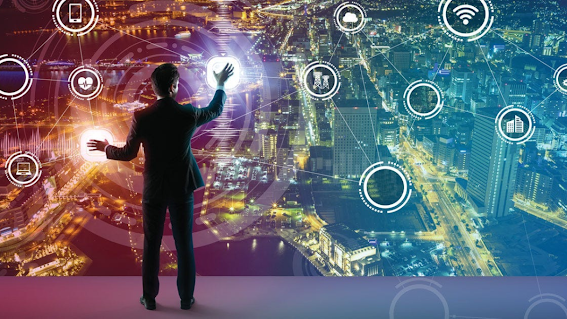AI and IT: A Relationship Redefining the Future of Technology
In the ever-evolving landscape of technology, the symbiotic relationship between Artificial Intelligence (AI) and Information Technology (IT) is emerging as a transformative force, reshaping industries in the future of technology and redefining the way we approach innovation.
The Dynamic Duo: AI and IT Collaboration
Gone are the days when AI and IT operated in silos. Today, their collaboration is at the forefront of technological advancements. AI, with its ability to process massive datasets and derive insights, complements IT’s infrastructure and operational prowess. This collaboration is unlocking new possibilities across diverse sectors, from healthcare and finance to manufacturing and beyond.
Enhancing Efficiency and Productivity
The marriage of AI and IT is a game-changer in terms of efficiency and productivity. AI algorithms are streamlining IT operations by automating repetitive tasks, optimizing workflows, and predicting potential issues before they disrupt systems. This not only minimizes downtime but also allows IT professionals to focus on strategic initiatives that drive business growth.
Data-driven Decision Making
The integration of AI into IT systems is paving the way for data-driven decision-making. With AI’s analytical capabilities, organizations can extract actionable insights from vast datasets, enabling more informed and strategic choices. This data-driven approach is fostering innovation, improving customer experiences, and giving businesses a competitive edge in the digital marketplace.
Cybersecurity Reinvented
As technology advances, so do the threats it faces. The collaboration between AI and IT is bolstering cybersecurity measures. AI algorithms are adept at identifying patterns and anomalies, enhancing the detection of potential security breaches. This proactive approach, combined with IT’s robust security infrastructure, is fortifying organizations against evolving cyber threats.
The Rise of Intelligent Systems
The future of technology lies in intelligent systems that seamlessly blend AI and IT capabilities. From smart cities and autonomous vehicles to the Internet of Things (IoT), the synergy between AI and IT is laying the foundation for a connected and intelligent world. These systems not only enhance convenience for individuals but also offer unprecedented opportunities for businesses to innovate and thrive.
Challenges and Ethical Considerations
While the collaboration between AI and IT is undeniably transformative, it comes with its set of challenges and ethical considerations. Issues such as data privacy, algorithmic bias, and job displacement require careful navigation. As stewards of this technological evolution, it is crucial for industry leaders, policymakers, and innovators to address these challenges responsibly and ethically.
Conclusion: A Harmonious Future
The partnership between AI and IT is not just a trend; it’s a paradigm shift in the technological landscape. As these two domains continue to collaborate and evolve, we can anticipate a future where technology is not just powerful but also harmonious, enhancing our lives and reshaping industries in ways we have yet to imagine. The journey towards this future is a testament to the boundless potential of human ingenuity and the transformative power of collaboration between AI and IT.
For more information, visit Superior Codelabs.
Shaikh Fakruddin is the Founder and CEO of Superior Codelabs.




Comments
Post a Comment